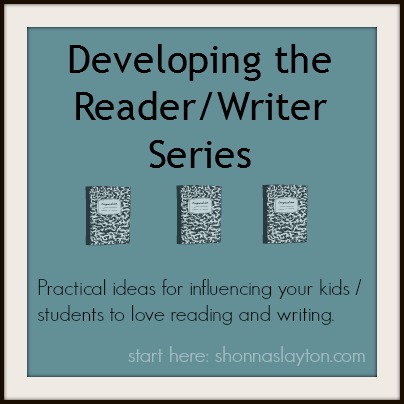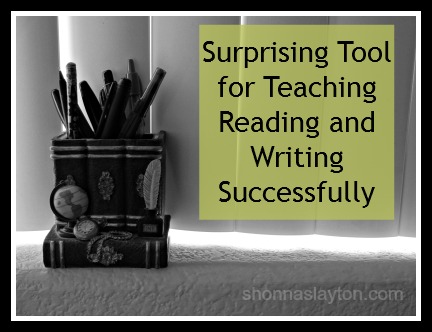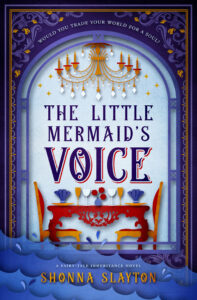New parents are always getting advice. Some unwanted. Some ineffective. Some so spot-on you’ve got to pay it forward. I don’t remember where I heard it first, but early on, I picked up the idea to read to my kids. But not just read to them until they can read for themselves. I think most parents stop there. We get our kids hooked on books and think: Yes! We did it. We’ve birthed a reader! High-fives all around. (Which was my original plan until someone challenged me to go further.)
The full advice was to read to your kids and keep reading to your kids. Don’t stop when they can read Dr. Seuss. Don’t stop when they have moved on to Chapter books. Don’t even stop when they are teenagers! Continue to develop their ear for good writing–vocabulary, sentence construction, content.
Ack! Really? That sounds time-consuming. Yes. Yes, it is. But it’s a whole lot of fun, too.
The Why
One of the biggest mistakes we make as parents and teachers is to stop reading out loud to our children when they reach the age of reading faster independently. In doing so, not only do we deprive them of the opportunity to hear these all-important reliably correct and sophisticated language patterns, we lose the chance to read to them above their level, stretching and expanding their vocabulary, interests and understanding.
–Andrew Pudewa, Institute for Excellence in Writing
The full pdf article is here: One Myth & Two Truths: Nurturing Competent Communicators and a further list of excellent articles on reading and writing here: http://www.excellenceinwriting.com/articles. Andrew Pudewa also has an excellent lecture called Nurturing Competent Communicators. It is well-worth the $3 download.
One of my favorite books on the topic of reading aloud has been updated and newly released this summer. Jim Trelease’s The Read-Aloud Handbook: Seventh Edition. In it, he gives you all the stats and studies and reasons why reading aloud is so effective. Outside of all the improved school scores is my favorite reason for reading aloud to kids: he says that reading aloud conditions a child “…to associate books and print with pleasure.”
“There are, however, displeasures associated with reading and school
. The learning experience can be tedious or boring, threatening, and often without meaning—endless hours of work sheets, intensive phonics instruction, and unconnected test questions. If a child seldom experiences the pleasures of reading but increasingly meets its displeasures, then the natural reaction will be withdrawal.
– Jim Trelease, The Read-Aloud Handbook: Seventh Edition
You can go to his website to read several excerpts of the new edition: http://trelease-on-reading.com/. Also, this summer a group of teachers held a book study to discuss Trelease’s ideas. You’ll find lots of good reading; start here at Pre-K Pages.
Another book that touches on the importance of reading aloud is Honey for a Child’s Heart and Honey for a Teen’s Heart
.
“What w
e are proposing in this book goes against this cultural grain [increasingly hectic family life]. This book talks about reading and listening to each other, talking about ideas. It gives clues about how to do it. We believe it is possible to have a growing friendship with our children as they mature, rather than a growing alienation. Parents and teens both profit from time spent in knowing each other and sharing feelings and ideas.
We present these ideas with enthusiasm because parents need to think about whether they are giving too much ground to cultural pressures instead of establishing their own family culture—one that nurtures the inner lives and values of young adults.”
–Gladys Hunt, Honey for a Teen’s Heart
p.12
The How
Our homeschool is loosely based on the Charlotte Mason method. This method stresses using living books.
Charlotte’s students used living books rather than dry textbooks. Living books are usually written in story form by one author who has a passion for the subject. A living book makes the subject “come alive.”
Since one of my goals is to challenge my kids while keeping them engaged, I like to use tried and true novels for our read alouds, those that have passed the scrutiny of parents and teachers and kids for years and years.
There are all kinds of lists you can find online, however, I question the quality of many of these lists. Some are simply lists of best-selling books. Best-selling is not the same as a best read aloud.
Read alouds are the backbone of many homeschool curricula so you are sure to find great books that are also grade-level appropriate on these lists:
Literature-based curriculum lists:
- Sonlight (our go-to curriculum!)
Bonus tips:
Tip 1: Allow your children to play with building blocks, or doodle, or sit on a ball, or whatever quiet activity that keeps their hands busy so they can listen for longer.
Tip 2: Audio books. If you are having trouble fitting in a good read-aloud time, you can use audio books to fill that space. Audio books are great for the car, bedtime, or while doing crafts or a puzzle….or even chores!





